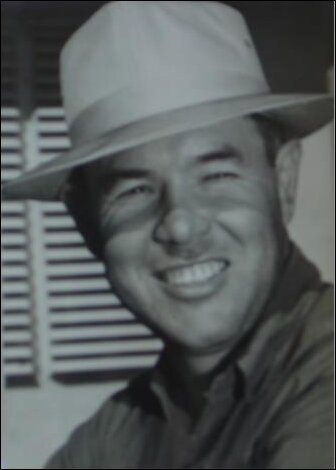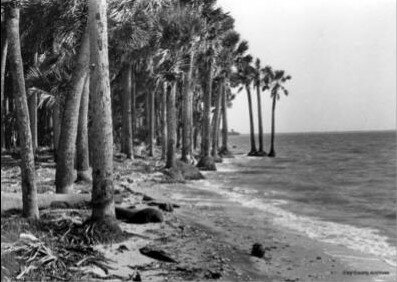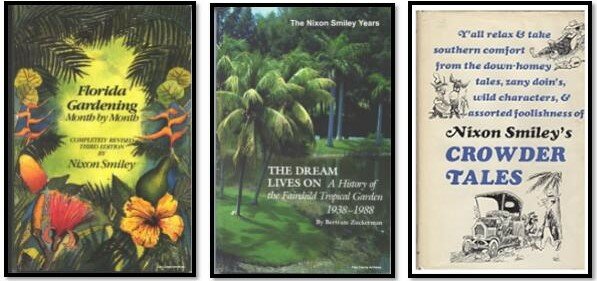Celebrate Clay County History: Nixon Smiley
A kid from a small town who went on to do big things
Like artist Augusta Savage and businessman Charles Merrill, Nixon Smiley was a kid from a small town who went on to do great things in life. Nixon was a reporter, columnist, editor , and feature …
This item is available in full to subscribers.
Attention subscribers
To continue reading, you will need to either log in to your subscriber account, below, or purchase a new subscription.
Please log in to continueDon't have an ID?Print subscribersIf you're a print subscriber, but do not yet have an online account, click here to create one. Non-subscribersClick here to see your options for subscribing. Single day passYou also have the option of purchasing 24 hours of access, for $1.00. Click here to purchase a single day pass. |
Celebrate Clay County History: Nixon Smiley
A kid from a small town who went on to do big things
Like artist Augusta Savage and businessman Charles Merrill, Nixon Smiley was a kid from a small town who went on to do great things in life.
Nixon was a reporter, columnist, editor, and feature writer for the Miami Herald. He also published several books about his beloved Florida. His specialty was Florida horticulture, and many of his books focused on that topic.
Born in 1911, Nixon grew up in Orange Park, hearing the tales of the river and the northern tourists who once graced the town’s homes and hotels. Having lived there until he was about seven years old, the Town of Orange Park left an indelible mark on Nixon, evidenced by the fact that he is buried there in Magnolia Cemetery next to his mother and maternal grandfather.
An excerpt from a 1969 Miami Herald column he wrote about growing up in Orange Park:
“My maternal grandparents came here in the 1880s to open a boarding house among the live oaks on the bluff overlooking the river. Among their winter guests was John Burroughs, the naturalist. Like President Grover Cleveland, more affluent guests stayed at the Hotel Marion built in 1881.”
Burroughs was a famous naturalist who championed conservation and was good friends with Teddy Roosevelt. Roosevelt went on to champion the creation of beautiful national parks. Burroughs was a regular winter visitor at the family’s boardinghouse, and it was here that the young Nixon may have discovered his love of nature, particularly plants.
“After Orange Park’s winter visitors forsook the St. Johns for warmer South Florida, business became intolerably dull here. My folks sold their boardinghouse in 1912 ...”
Life became difficult for Nixon Smiley and his family in Orange Park, as he later explained in his semi-autobiographical work Crowder Tales:
"I was about seven when my paternal grandparents of Crowder, Georgia adopted me. It was the fall of 1918. I had lost both my parents, my father in a logging train accident, and my mother in the influenza epidemic. My widowed maternal grandmother, with whom I was left, was unable to feed an ever-hungry boy, much less clothe and educate him. So, she wrote to my grandparents in Crowder. Would they take the boy?"
And his grandparents did. They were James and Emma Smiley. James went by Pa, and Pa called Emma “Emmer.” His grandmother, Lizzie Strickland, put him on a train by himself at seven years of age and asked the conductor to ensure he got off at the Crowder stop.
And so began a life of hard physical farm labor and poverty. Pa had owned a thoroughbred farm, and that’s how Smiley’s father, Conley, met Ruby Strickland, his mother. Conley would travel to Jacksonville to race, breed, and trade horses. Pa lost the farm to the bank in 1908, which led him and his family of seven boys to find work in the logging industry, resulting in Conley meeting an early demise.
Nixon survived his childhood, which was filled with Pa’s and his uncles’ escapades. It was always “something or another.” The saintly Emmer tolerated it all as deeply as well. Nixon later moved back home to Jacksonville, where he began his career at the Florida Times-Union. Excluding a brief stint during WWII, he wrote for the Miami Herald from 1940 until he retired in 1973.
Nixon Smiley was an avid gardener, but he was more of a naturalist than just planting tomatoes and a few flowers. He volunteered at the Fairchild Tropical Botanic Garden and became Interim Director from 1953 to 1961. The directorship is a PHD level role, but Nixon, so well self-taught, executed his duties without a college degree. From 1958 through the 1960s, Smiley was a member of the board of directors of the International Palm Society.
Nixon Smiley passed away in 1990. His wife, Evelyn, and son, Karl, survived him. He contributed in unmeasurable ways to conservation, beautification, and the study of Florida horticulture. The Nixon Smiley Research Papers (1940s-1972) are held at the Historical Museum of Southern Florida, and the 120-acre Nixon Smiley Pineland Preserve is located in Dade County. Nixon Smiley — a small-town kid who went on to do great things in life.












